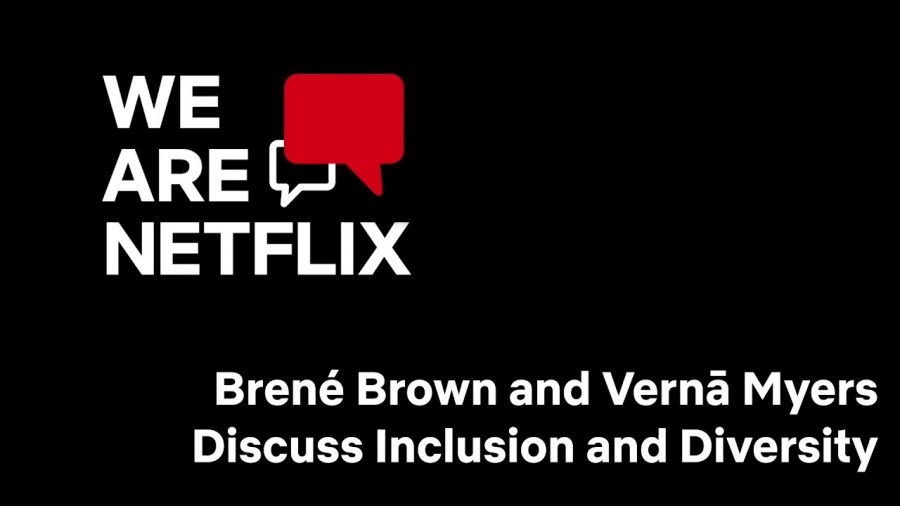Netflix Inclusivity and Representation
October 30, 2020
Representation is something Hollywood has struggled with for over a century now, and many streaming services like Netflix and Hulu are fighting to rewrite the script to be inclusive of everyone. That isn’t to say Hollywood will change overnight, in fact, many movies do still feature primarily white, neurotypical, and heterosexual characters and cast, but change is starting in the world of TV and movies. Kids and teens growing up today are seeing something no other generation before has seen: an era with representation for people of color, mental health issues, and the LGBTQ+ community being incorporated into the world of cinematography. While accurate representation it’s still a long way off from being perfect, progress is beginning to move in the right direction.
Mainstream media like TV shows, movies, and the music industry in the U.S. have been historically whitewashed. People of color haven’t been represented accurately or often in the mainstream media for a very long time, and misrepresentation in the media has done nothing but continue to contribute to harmful stereotypes and misconceptions. Along with many other production studios, Netflix is trying to combat this trend with casts consisting of more equal representation for various ethnicities, religions, and cultures. An influx of new original shows and reboots like On My Block, Grand Army, Hollywood (which is a direct discussion and critique of this topic), sense8, Charmed, and The Haunting of Bly Manor are featuring more diverse casts than their previously strictly caucasian counterparts, a long-overdue decision on Netflix’s part that has not been without scrutiny. In an interview with Indiewire discussing why the decision to feature a more diverse cast than the original series was made, the wife of the creator of The Haunting of Bly Manor shares the following: “Since television is a world of make believe,” she said, “there shouldn’t be any rules that prohibit a performer of color from being included in a story. It makes you reconsider yourself. If you’re the type of person saying, ‘Oh, no, this character is supposed to be white’ that is maybe a red flag that you need to be examining yourself.”
Mental health and disorder representation is another major pinnacle of Hollywood failure that Netflix is attempting to combat. A large variety of featured shows like Bojack Horseman, Shameless, Supernatural, This is Us, Jessica Jones, and You’re the Worst are being used to create a more accurate portrayal of heavy topics like depression, anxiety, PTSD (post traumatic stress disorder), substance abuse, and bipolar depression. Many of these topics have been previously either misrepresented as just simply “being sad” and panic attacks, or not shown at all in mainstream television, so more accurate portrayal and description of these issues is helping shine a brighter light on these issues and destigmatize their discussion. Similarly, shows like Atypical are being used as a tool to combat stereotypes and attempt a more accurate portrayal of what it’s like to move through life on the spectrum. There are many mainstream misconceptions about what it’s like to be on the spectrum and about what it means to be autistic, so having more media representation and exposure will be beneficial not just for people on the spectrum, but also for people who haven’t had any real exposure to or are uneducated on these matters.
LGBTQ+ inclusion in media is becoming a heavy focus for the revolution of diversity in media, especially amongst teen viewers who may be struggling with self identity. Representation for the LGBTQ+ community is beginning to boom within Netflix shows and movies, and it’s encouraging shows to include not just strictly gay characters, but an influx of characters struggling with sexual and gender identity and a variety of queer characters all across the spectrum. Media is becoming a crucial factor in the destigmatization of discussing sexuality and coming out throughout all age ranges and demographics in society, and having more representation for all individuals on the queer spectrum (not just exclusively gay men) is helping involve everyone in the conversation. Coming-of-age and teen shows like I am Not Okay With This, The Chilling Adventures of Sabrina, Sex Education, Trinkets, and Grand Army all feature casts and characters with a multitude of LGBTQ+ representation [pride.com], helping their target audience (teens) many teens to embrace their identity and find community with others going through the same experiences as them.
While Netflix has not been without failures in their efforts to break stigmas and get people discussing issues of society (Cuties, Insatiable, Tall Girl, many others), efforts are being made to push the mainstream media in the right direction. Change doesn’t happen overnight, but if more production companies take a page from the same book from Netflix, we’re going to see massive change in the movie and television industry.

